Phone catching bin
the problem
In our ideation, we wanted to focus on the root issue and prevent the phone from even dropping, rather than see what we could do to prevent the damage as it occurs. This led us to come up with the problem statement:
"How can we make a design to assist us in holding our phones during everyday tasks?"
Phone stand with sturdy base
Phone stand with clip base
THE SOLUTION
We created three products as the "PhonePal" series. The first two are phone stands that hold a users phone so they can multitask while the phone is in a secure place. The difference is one is a stand version, say for a desk or flat surface, and the other is a clip that the user can place by their bedside. This X grip was chosen so users could still hold their phone even if it was being held by the product and to continue enjoying their scrolling and hands-on experience without increasing the risk of dropping the phone. The second was a bin with a flat bar meant to be placed between two weighted surfaces that hangs off the side of the bed, so if a phone falls, it will be caught by the contraption. The color scheme leans into browns and silvers — colors featured heavily in Eileen Gray's work in order to create a cohesive and visually appealing way to prevent the user from dropping their phone!
THE DESIGN PROCESS
Moodboard #1 for aesthetic vision
Moodboard #2 for aesthetic vision
RESEARCH
To conduct our research, we first identified a user group, since dropping one's phone can be considered a univeral problem. We focused on college students because this age range is the most likely to constantly be using their phone. In order to get information, we used a formal survey to find out when, why, and how this specific demographic dropped their phone.
Our survey included a multitude of open-ended questions so users could share their personal experiences more freely. We first started by asking our users how often they are on their phones to answer our first question: Does increased phone usage correlate with a higher drop rate? Our peers' answers told us that there was no real correlation, as even those who answered a lower number still dropped their phone quite often due to external influences. Our second question was in what circumstances were phones dropped more, and our peers reported that often when they are in their rooms scrolling on lying in bed, the phone slips from their hand and either falls on them or onto the ground. A high number of users also reported that multitasking or rushing around caused them to be more likely to drop their phone.
ROUGH PROTOTYPES - PHONE STANDS
For two of the prototypes, we made two stands, one with a clip attachment and one with a sturdy base. These attachments were made from wood, foam, tough plastic stems, and plastic hands that gripped the phone. These attachments were made from wood, foam, tough plastic stems, and plastic hands that gripped the phone. The wood and foam bottom were made to be sturdy and hold up the thick plastic tube that made up the majority of the stand. By using these materials, we were able to have a sturdy base and tube to hold the phone, as phone weights can differ between individuals, as well as focus on making sure the ideated function of the product would work. While the clip form was not as secure, it was still able to be sturdy enough to grip the table since the wood had enough friction against the table's material to hold it into place
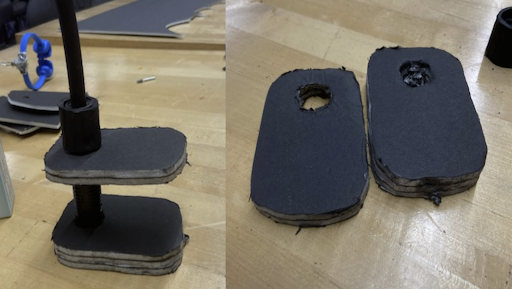
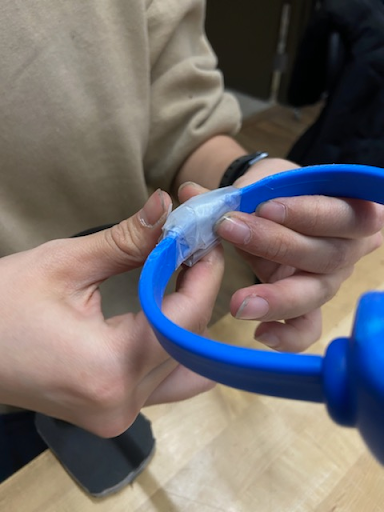
Users testing the hook mechanism of the cardboard prototype.
ROUGH PROTOTYPE - PHONE BIN
In our bin, we used cardboard as it was more malleable and made it easier for us to form the curve of the bin out of one continuous strip of cardboard. By using cardboard, we were able to make the bin withstand the force of a phone drop, as we assumed the weight of phones would hit the product with some force behind it. We used pipe cleaners for the hooks, as it was easiest to tie around objects, and when doing our testing during the building process, they were surprisingly sturdy. We tested our product while making it by putting our own phones into the grip and dropping them into the cardboard bin to make sure that when we brought products to user testing, they would be able to hold up to user standards.
ROUGH PROTOTYPE TESTING AND FEEDBACK - PHONE STANDS
The main critique for the stands was that the hands that gripped the phone were considered untrustworthy due to the way the phone appeared not to hug the backside of the phone. Having a more secure grip would make the users feel more likely to use the product, and while no specific type of phone grip was recommended, having that support for the backside was highly requested.
Additionally, we found that adding an extra handle screw to the external screw created a better user experience, allowing users to understand how to secure the clamp to the table surface better.
ROUGH PROTOTYPE TESTING AND FEEDBACK - PHONE BIN
The phone bin was deemed useful, but users asked for a more malleable material than cardboard to place it in tighter spaces. Users also wanted clips that appeared more securely than the pipe cleaner ties so the product would look and feel more trustworthy, and users would be more inclined to use it.
Users also thought that the cardboard/sturdy material used could damage the phone if it is dropped in and that its rigid shape would not allow for as much versatility for where the bin could exist in the user's space.
DETAIL PROTOTYPES - PHONE STANDS
Taking into account the requests of our users, we upgraded the materials from foam, wood, and cardboard to plastic and metal, and more refined locking, holding, and closing mechanisms were built into the products. In our phone stands, the first stand with a sturdy base was switched to a thick plastic base that was heavier and of greater quality in holding the stand's stem up. In the clamp-based stand, we implemented a high-quality screw and clamp system, as shown in the photos. The clamp is screwed by opening the two sides of the clamps and then spinning the handle in order to create the pressure required to clamp it down. Moving onto the stems, both products utilize a recycled microphone stand, allowing for greater product mobility and adaptability to the user's needs. We kept the original clamps because we wanted more testing with the type of grip. To connect the grip and the new stem, we included a ball joint to allow the user to move their phone sideways, which will enable it to move with the user's hand placement.
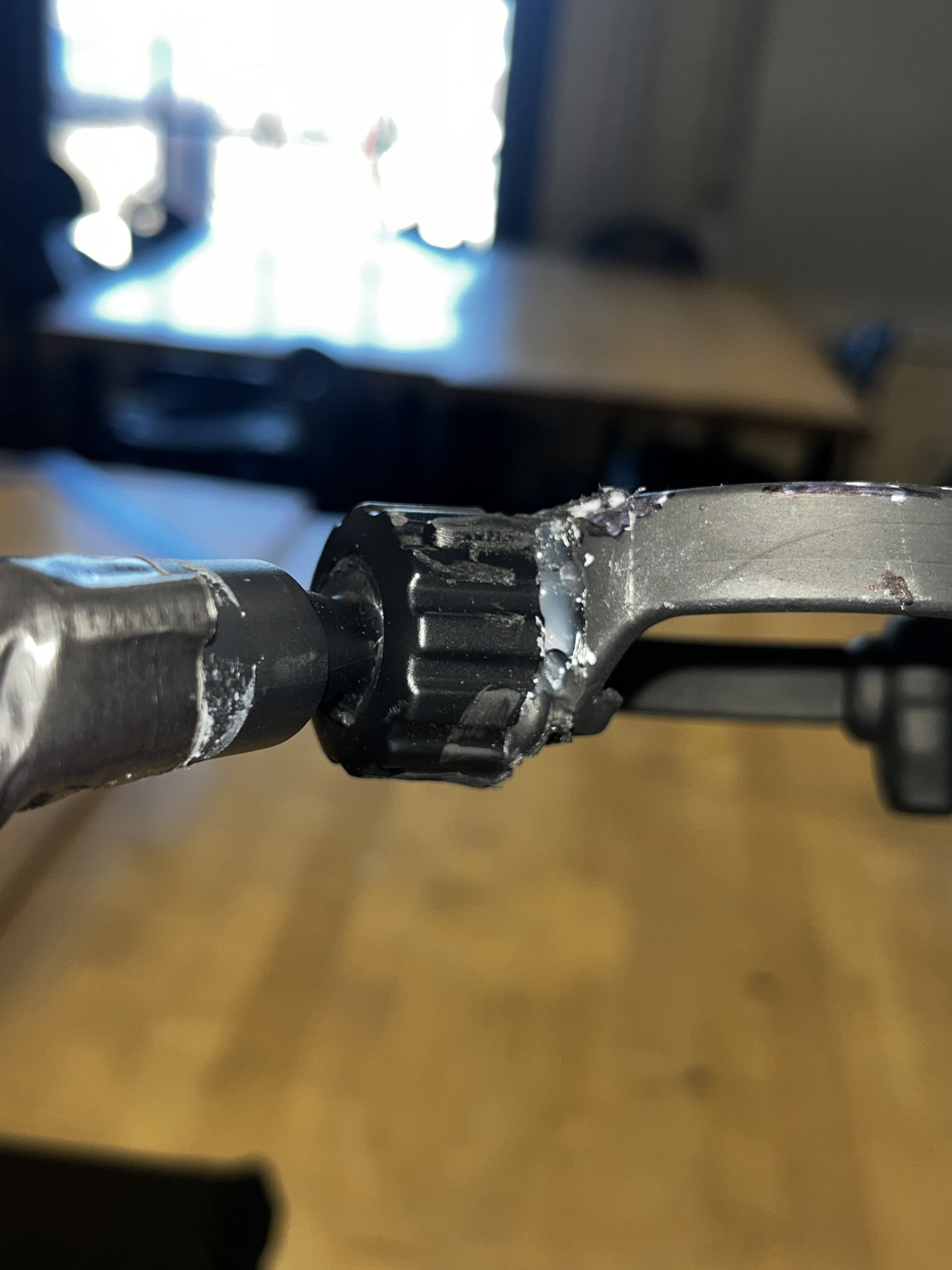
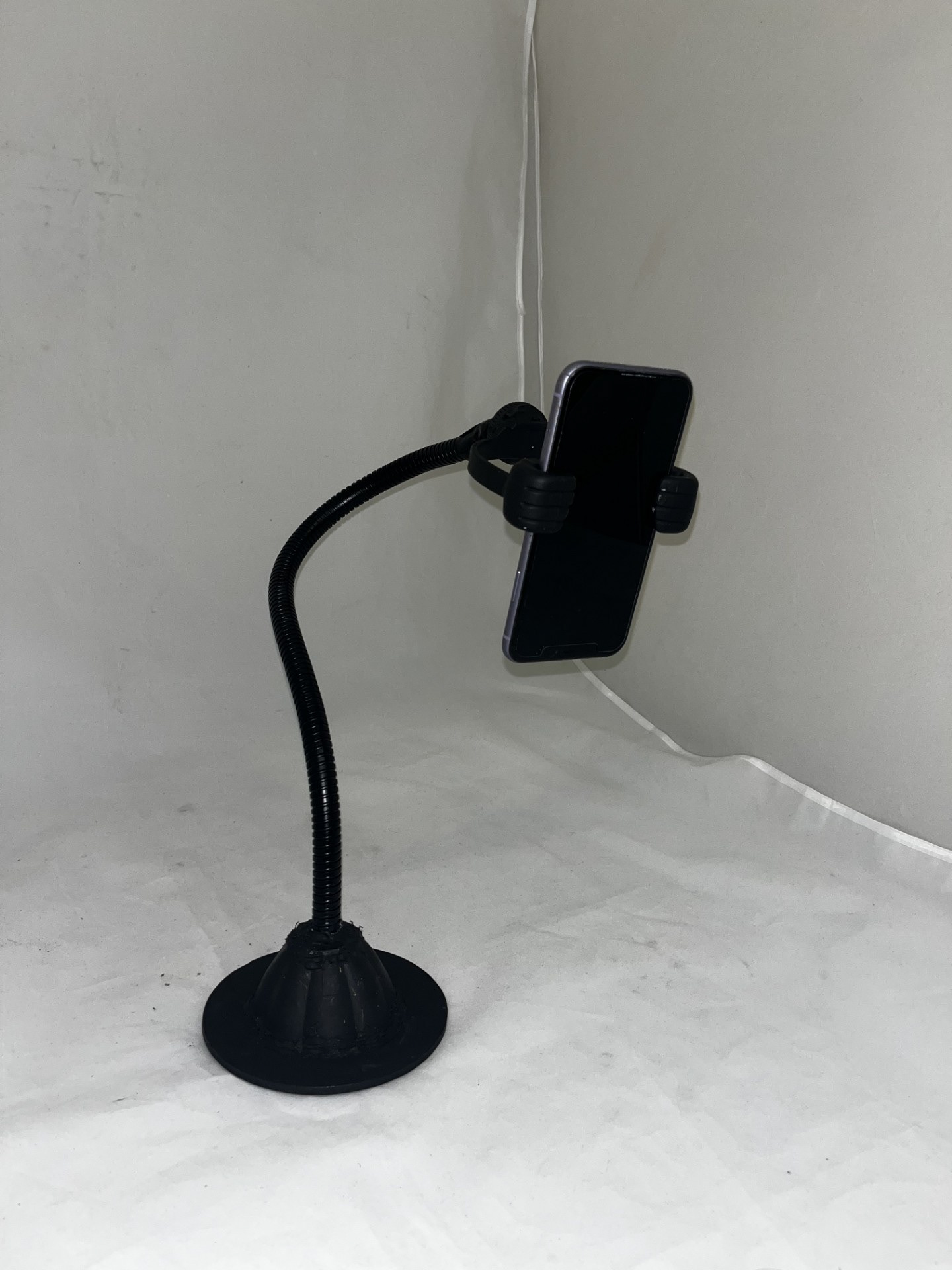
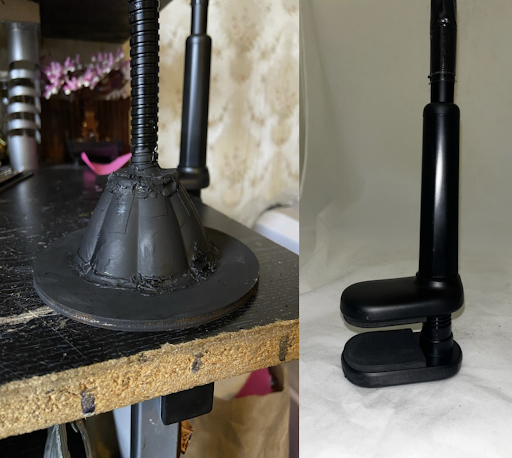
Detailed bin prototype using a softer foam material. Pictured is a phone being thrown into it to test security.
DETAIL PROTOTYPES - PHONE BIN
For the bin, we completely changed the material to be softer, utilizing an old yoga mat to retain some rigidity without having a material that could potentially damage the phone. We have an adjustable closing mechanism in the bin rather than a set width. We also included a hang-on clip, so it takes less work to put the product where the user wants.
DETAIL PROTOTYPES TESTING AND FEEDBACK - PHONE STANDS
In our second prototype testing session, users said that the stands color (black) was identified as visually heavy, especially in one's eyesight like on a desk or next to one's bed. When testing the hand grip, it was again shutdown because when the hands gripped the phone, the emotional connection between the fake hands and real hands holding something could make users feel that it was less trustworthy because the grip looks like it is not holding the phone like real hands should. Users also found it hard to hold their phone like they would if they were scrolling when it was in the hand grip, which made them want a grip they could still hold normally.
DETAIL PROTOTYPE TESTING AND FEEDBACK - PHONE BIN
In a desk critique with our professor, he identified that instead of clips for the bin we could use a flat crosshatch bar that would slide in between the mattress and the mattress frame, the weight of the mattress would hold the object in place. This was recommended because the clips do not work on every bed frame, and we would want this product to be able to reach a larger user base.
Cross hatch bar featured on final concept
Product featuring the X - Grip